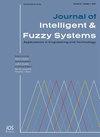利用问题感知图卷积网络增强教育知识库中的问题回答
IF 1
4区 计算机科学
Q3 COMPUTER SCIENCE, ARTIFICIAL INTELLIGENCE
引用次数: 0
摘要
本文提出了一种基于问题感知图卷积网络(GCN)的教育知识库问答方法。KBQA为学习者提供即时辅导,提高他们的学习兴趣和效率。然而,大多数开放领域的KBQA方法对问题句和候选答案实体进行独立建模,限制了它们的有效性。该方法提取特定问题的描述信息和查询实体集,利用知识库的Transformer和预训练嵌入对其进行处理,并从知识库中提取候选答案集的子图。GCN通过问题描述和查询实体集两种关注机制更新节点信息。将查询描述信息、查询实体集和候选实体表示融合在一起计算分数并预测答案。在MOOC Q&A数据集上的实验表明,该方法优于基准模型。本文章由计算机程序翻译,如有差异,请以英文原文为准。
Enhancing question answering in educational knowledge bases using question-aware graph convolutional network
In this paper, a question answering method is proposed for educational knowledge bases (KBQA) using a question-aware graph convolutional network (GCN). KBQA provides instant tutoring for learners, improving their learning interest and efficiency. However, most open domain KBQA methods model question sentences and candidate answer entities independently, limiting their effectiveness. The proposed method extracts description information and query entity sets for a specific question, processes them with Transformer and pre-trained embeddings of the knowledge base, and extracts a subgraph of candidate answer sets from the knowledge base. The node information is updated by GCN with two attention mechanisms expressed by the question description and query entity set, respectively. The query description information, query entity set, and candidate entity representation are fused to calculate the score and predict the answer. Experiments on MOOC Q&A dataset show that the proposed method outperforms benchmark models.
求助全文
通过发布文献求助,成功后即可免费获取论文全文。
去求助
来源期刊

Journal of Intelligent & Fuzzy Systems
工程技术-计算机:人工智能
CiteScore
3.40
自引率
10.00%
发文量
965
审稿时长
5.1 months
期刊介绍:
The purpose of the Journal of Intelligent & Fuzzy Systems: Applications in Engineering and Technology is to foster advancements of knowledge and help disseminate results concerning recent applications and case studies in the areas of fuzzy logic, intelligent systems, and web-based applications among working professionals and professionals in education and research, covering a broad cross-section of technical disciplines.
 求助内容:
求助内容: 应助结果提醒方式:
应助结果提醒方式:


